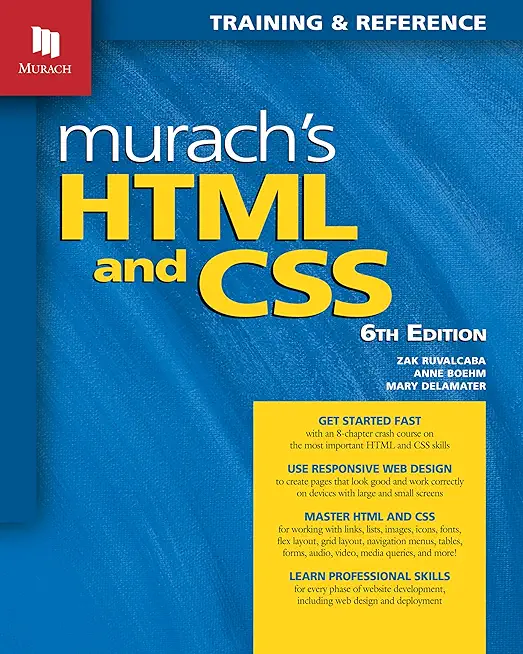Lessons for Small Business: How to get the Most out of Virtual Meetings
It’s befuddling when you think about how many ways there are to communicate in 2013. I’d say there are too many new ways to communicate – social media, phone, Skype, instant message, text message, email, it goes on and on. But do any of them outweigh the power of a good old-fashioned face-to-face meeting? Most business executives would argue no. Nothing can replace a face-to-face meeting, at least yet.

That said, face-to-face meetings are without question the most expensive kind, given the travel costs required to make them a reality, and companies around the globe have been trying to make them more financially manageable ever since the recession set in. But recession or no, face-to-face meetings are rarely in the budget cards for small businesses. So how can entrepreneurs around the globe get more out of their virtual meetings while ensuring any physical meeting is worth the cost?
Turns out, there are lessons to be learned from the corporate world that was forced to tighten its belt during the recession. However, before analyzing those lessons and figuring out how they can apply to the world of startups and other small businesses, let’s figure out why face-to-face meetings are that much more desirable in the first place.
Visual Cues. In my book, the most important aspect of meeting in-person is an intangible one: body language. There are an immense number of visual cues we subconsciously pick up on in every day conversations that help us understand what our conversation partner is feeling or thinking. We’re more lost in conversation than you might think without those cues. Try blindfolding yourself during your next conversation with an acquaintance and see for yourself. Contrary to popular belief, video chat, though giving users the chance to see their counterpart’s face, do not solve the problem entirely as the image is still merely two-dimensional.
Less Distraction. As anyone who’s ever participated in a virtual meeting before can attest to, it’s simply easier to get distracted when you know no one is watching you. Whether that distraction turns into you surfing the web for an hour or plucking your eyebrows in the mirror during a call depends on the severity of your distraction, but as long as there’s any degree of distraction you’re not paying as much attention as you could or should be.
More Collaboration. Most companies are comprised of individuals that work in teams with one another to accomplish their goals. These teams are much more effective when they can brainstorm and strategize in person if for no other reason than the two listed above. In larger face-to-face business meetings, these “side-line” conversations among participants are often very valuable in accomplishing the various tasks and duties.
Accountability. It’s not rare for professionals to be more eager to please their superiors or clients when they have met said superior or client in person. When that person is merely a voice on the phone or face on Skype, there’s less emotional connection and thus less motivation to do an outstanding job.
For these reasons and more, corporate executives will praise the benefits of travel meetings until the cows come home, and even have data to prove that in-person meetings are directly responsible for increasing revenues and profits. A study reported on by the Washington Post found that found that every dollar invested in business travel results in $12.50 in added revenues and $3.80 in new profits.
However, travel budgets were slashed in late 2008 and the business world is only recently getting back to their regular travel levels, and cautiously at that. Here are two important ways they’re making sure their travel budgets are being spent wisely. Both of these lessons are easily applied to small business as well.
Agenda. It may be hard for some small business owners to believe (certainly is for me), but travel budgets in the corporate world are often so padded that the meeting’s agenda is not given the attention it requires for the meeting to be effective. If that happens, there’s a very good chance that a meeting could come and go without the goal being accomplished, or even being established in the first place. This has been addressed by event planners putting together more straightforward measurable agendas. A study by an event marketing association found that the number of event planners that measured the activity developed in meetings grew 12 percent from year to year. I’m surprised there wasn’t more growth.
Lean Traveling Teams. This is, I think, the best example of balance. Corporations realized during the recession that not all personnel they were sending on travel meetings were essential. Sure, their voices need to be part of the conversation, but wingmen whose purpose on business travel is to answer questions and be more peripheral are just as effective when video-conferenced or phoned in. Alternatively, teams can conduct preliminary meetings over phone or via video conferencing software and save their travel budgets for the final proposal meeting.
Excelling at Virtual
The perks of virtual meetings, those conducted over the internet via audio or video connection, don’t need any introduction. Lower travel costs, less personal schedule disruption, and more participation from typically shy employees are all pretty easy sells. But the big meetings worth traveling to that make ponying up travel costs worth it won’t materialize unless the smaller meetings leading up to them go well. So what are some best practices for virtual meetings?
Lessen Distractions. It goes without saying that most businessmen and women do this without being told before a meeting starts, but closing all other Internet windows and sitting in a room with no windows, TV’s, or other people will help you focus attention on the meeting at hand.
Visual Component. This could be using a video conferencing tool for face-to-face contact, or it could be “screen sharing” materials that you are discussing so that everyone is on the same page. A bonus of a visual component is that it helps to lessen distractions, as you won’t be able participate in the conversation unless you are staring at the materials in question.
Confirm Consensuses. When meetings are conducted between two or more groups, or between a single person on one end and a group on the other, it’s important to confirm decisions that are reached. There are often many opinions and voices in play at once, and without the aid of body language, the true intent of these communications can be confusing. No one wants to schedule a follow up meeting to correct the miscommunications in the previous meeting.
Address People by Name. Similarly to the cloudy consensus conundrum alluded to above is the more singular issue of confirming who you are talking to before you begin to talk. Without eye contact, no one has a clue they specifically are being addressed unless they are addressed verbally from the outset. There are few things less awkward in the business world than figuring out who is talking to who, and then both people starting to speak simultaneously over and over again before each deferring to the other and enduring the awkward silence that follows.
Internet Connection. Virtual meetings are next to impossible when an Internet connection is so slow the stream keeps breaking up and disconnecting. Before attempting a videoconference or Skype call, make sure that the Internet you’re using can handle it. Otherwise, you’ll like an amateur.
Identify Leader. If you’re going into a meeting with a team member, it’s not only important to spend as much time planning the meeting as the meeting will take itself, but also to determine who will be the “point person.” In other words, the person who will dictate the flow of the meeting and either answer questions that arise or direct them to the appropriate party. “Too many cooks in the kitchen” can derail a virtual business meeting quickly, especially if any factual or emotional discrepancies between your team members become public.
Virtual meetings may not offer the charismatic connection that in-person meetings do, but in time I’m confident all business people will learn to adapt their physical meeting skills to the virtual world. Not only will their personal schedules be more flexible and their wallets fatter because of it, but also everyone in their market within the internet-connected world will become a more feasible client. Business being about profits, that’s a great thing.
http://www.iacconline.org/content/files/WhyFace-to-FaceBusinessMeetingsMatter.pdf
General rules for why face to face meetings are usually preferable:
However cost effective computer mediated communication devises are, there are
potential disadvantages. The opportunities for distractions are great using these
modalities—participants carry on working, check email, engage in SMSing, have
irrelevant side conversations, and the like4
Group processes and outcomes that require coordination, consensus, timing, persuasion of others, etc. are less effectively accomplished using computer mediated communication modalities. Indeed, according to Straus and McGrath5, the type of communication medium is likely to affect outcomes “when there is a need for the expression of emotions, when tasks require coordination and timing among members’ activities, when one is attempting to persuade others, or with task require consensus on issues that are affected by attitudes or values of the group members.” (Straus and McGrath, p. 163). Under these circumstances, face-to-face communications are likely to be more effective compared to computer mediated devices6
Face-to-face business meetings afford participants opportunities to develop
transparency and trust among each other in ways that are not always possible compared to other forms of communications.
“Meetings are an important sense-making form for organizations and communities because they may define, represent, and also reproduce social entities and relationships.” (p. 39).
.
Face-to-face business meetings allow “side-line” conversations among participants
that are often very valuable in accomplishing the various tasks and duties. Another aspect of face-to-face meetings is that they allow the direct expression of humor in a way that is not always conveyed in computer-mediated communications.
Members may feel freer to laugh, pun, and otherwise inject humor into conversations where as telecom and other forms are typically more sterile and “only business”
77% of people believe that offsite meetings are a necessity not a luxury; 85% believe face to face meetings are more likely to result in breakthrough thinking, and 82% believe that meetings bring out the best in people.
Dr. Arvey determined that group processes and outcomes that require coordination, consensus, timing and persuasion of others were better accomplished up close and personal.
--
Should talk about the importance of body language in meetings – how we interpret actions we don’t even realize we’re interpreting.
--
http://my.safaribooksonline.com/book/meetings/0814405606/the-virtual-meeting/ch09lev2sec1
In-Person Advantages
· More Interactivity
· Increased Responsiveness
· Privacy and Security of Information
· Diverse Group Activities
· Group Cohesion, Team Spirit, Social Interaction
· Full Control and Accountability
Virtual Advantages
· Reduced Cost
· Reduced Schedule Disruptions
· More Focused and Task-Oriented
· Increased Individual Involvement
· Increased Communication and Consensus Building
· Reduced Likelihood of Adversarial an Chaotic Discussions
--
http://online.wsj.com/ad/article/globaltravel-face
This article is the authority on why face to face meetings are that much more important. It explains that businesses are starting to get over the thrill of virtual meetings, realizing that they cannot possible be as effective as in-person meetings. Also points out that when the recession hit, travel budgets were the first to get cut. Companies saw how important they were when that happened, and are now starting to reintroduce them to previous levels.
The study found that every dollar invested in business travel results in $12.50 in added revenues and $3.80 in new profits.

“When a company reduces its travel budget, it loses both revenue and profits, giving competitors a real advantage.”
The study indicates that if a company eliminated its business travel, corporate profits would drop 17 percent in the first year, “and it would take more than three years for profits to reach the same level as before the travel budget cuts.”
Though companies are starting to reintroduce their meetings, they are doing so cautiously and more steadfastly measuring results from meetings than ever before. “A company that used to have a five day meeting might now turn that into a three day meeting, and take out some of the team building elements and replace that with more rich content.”
Indeed, a study by an event marketing association found that last year 70 percent of event planners measured the activity that was cultivated by their events — a 12 percent increase from those who performed such measurement the prior year.
Instead of looking at video conferencing as an alternative to offsite meetings, many companies are now combining the two, as well as using social networking tools as a powerful follow-up to face-to-face connections.
2 dimensional emotions and body language just don’t register with us the same.
Deadlines take on greater importance for people who know their clients and colleagues personally, because they’re more aware of the fact they’d be letting down a person, not just a Skype screen name or email address. Similarly, it’s easier to fire a colleague or vendor you’ve never met. People think twice about doing that to someone they have a strong personal relationship with.
Person to person and virtual meetings don’t have to be mutually exclusive. They can exist simultaneously. For instance, 1 or 2 team members can travel to meet with a client in person and then video-conference less essential team members in. Another option is to use video conference for introductory meetings, and then in-person meetings to build relationships, present critical information, and move forward on a project.
--
Three business needs that call for face to face meetings:
1. To Capture Attention
2. The Inspire Positive Emotional Climate
3. To Build Human Networks and Relationships
In Maritz Travel Company’s experience delivering virtual meetings, we are seeing a recurring theme from participant research assessing their virtual meeting experience. Participants stated that the significant temptation to multitask during virtual meetings was distracting and had an impact on the meeting objectives being achieved.
--
The importance of mobile technology cannot be underestimated. One of the worst parts of business travel used to be that you were off the grid and not able to keep in close contact with your team. Now, you’re never off the grid.
--
http://web-meetings.org/guide/advantages.html
Advantages of Virtual Meetings
· Travel Time and Costs
· Meeting Participation
· Recordings of Meetings
· Web Conferencing Software
· New Economy
· Quality of Life
--
http://allvirtual.me/2009/09/05/the-advantages-of-virtual-meetings/
Very little scientific evidence about virtual meetings being advantageous, other than that they’re more convenient and less expensive. But, if necessary for small business, there are good ways and bad ways to do them.
--
http://www.virtualedge.org/profiles/blogs/forbes-in-a-funk-over-virtual
--
http://images.forbes.com/forbesinsights/StudyPDFs/Business_Meetings_FaceToFace.pdf
This is borne out in Forbes Insights survey, where 58% of respondents said they were travelling for business less today than they were at the beginning of the recession in January 2008, with more than a third (34%) indicating they were travelling much less frequently. (Fig. 1) 59% of executives said their use of technology-driven meetings had increased during the recession. (Fig. 2)
other blog entries
Course Directory [training on all levels]
- .NET Classes
- Agile/Scrum Classes
- AI Classes
- Ajax Classes
- Android and iPhone Programming Classes
- Azure Classes
- Blaze Advisor Classes
- C Programming Classes
- C# Programming Classes
- C++ Programming Classes
- Cisco Classes
- Cloud Classes
- CompTIA Classes
- Crystal Reports Classes
- Data Classes
- Design Patterns Classes
- DevOps Classes
- Foundations of Web Design & Web Authoring Classes
- Git, Jira, Wicket, Gradle, Tableau Classes
- IBM Classes
- Java Programming Classes
- JBoss Administration Classes
- JUnit, TDD, CPTC, Web Penetration Classes
- Linux Unix Classes
- Machine Learning Classes
- Microsoft Classes
- Microsoft Development Classes
- Microsoft SQL Server Classes
- Microsoft Team Foundation Server Classes
- Microsoft Windows Server Classes
- Oracle, MySQL, Cassandra, Hadoop Database Classes
- Perl Programming Classes
- Python Programming Classes
- Ruby Programming Classes
- SAS Classes
- Security Classes
- SharePoint Classes
- SOA Classes
- Tcl, Awk, Bash, Shell Classes
- UML Classes
- VMWare Classes
- Web Development Classes
- Web Services Classes
- Weblogic Administration Classes
- XML Classes
- Introduction to Spring 6, Spring Boot 3, and Spring REST
15 December, 2025 - 19 December, 2025 - See our complete public course listing
did you know? HSG is one of the foremost training companies in the United States
Our courses focus on two areas: the most current and critical object-oriented and component based tools, technologies and languages; and the fundamentals of effective development methodology. Our programs are designed to deliver technology essentials while improving development staff productivity.
An experienced trainer and faculty member will identify the client's individual training requirements, then adapt and tailor the course appropriately. Our custom training solutions reduce time, risk and cost while keeping development teams motivated. The Hartmann Software Group's faculty consists of veteran software engineers, some of whom currently teach at several Colorado Universities. Our faculty's wealth of knowledge combined with their continued real world consulting experience enables us to produce more effective training programs to ensure our clients receive the highest quality and most relevant instruction available. Instruction is available at client locations or at various training facilities located in the metropolitan Denver area.
Upcoming Classes
- Introduction to Spring 6, Spring Boot 3, and Spring REST
15 December, 2025 - 19 December, 2025 - See our complete public course listing
consulting services we do what we know ... write software
The coaching program integrates our course instruction with hands on software development practices. By employing XP (Extreme Programming) techniques, we teach students as follows:
Configure and integrate the needed development tools
MOntitor each students progress and offer feedback, perspective and alternatives when needed.
Establish an Action plan to yield a set of deliverables in order to guarantee productive learning.
Establish an Commit to a deliverable time line.
Hold each student accountable to a standard that is comparable to that of an engineer/project manager with at least one year's experience in the field.
These coaching cycles typically last 2-4 weeks in duration.
Business Rule isolation and integration for large scale systems using Blaze Advisor
Develop Java, .NET, Perl, Python, TCL and C++ related technologies for Web, Telephony, Transactional i.e. financial and a variety of other considerations.
Windows and Unix/Linux System Administration.
Application Server Administration, in particular, Weblogic, Oracle and JBoss.
Desperate application communication by way of Web Services (SOAP & Restful), RMI, EJBs, Sockets, HTTP, FTP and a number of other protocols.
Graphics Rich application development work i.e. fat clients and/or Web Clients to include graphic design
Performance improvement through code rewrites, code interpreter enhancements, inline and native code compilations and system alterations.
Mentoring of IT and Business Teams for quick and guaranteed expertise transfer.
Architect both small and large software development systems to include: Data Dictionaries, UML Diagrams, Software & Systems Selections and more














